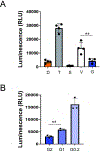Genipin increases extracellular matrix synthesis preventing corneal perforation
- PMID: 36871831
- PMCID: PMC10440284
- DOI: 10.1016/j.jtos.2023.02.003
Genipin increases extracellular matrix synthesis preventing corneal perforation
Abstract
Purpose: Corneal melting and perforation are feared sight-threatening complications of infections, autoimmune disease, and severe burns. Assess the use of genipin in treating stromal melt.
Methods: A model for corneal wound healing was created through epithelial debridement and mechanical burring to injure the corneal stromal matrix in adult mice. Murine corneas were then treated with varying concentrations of genipin, a natural occurring crosslinking agent, to investigate the effects that matrix crosslinking using genipin has in wound healing and scar formation. Genipin was used in patients with active corneal melting.
Results: Corneas treated with higher concentrations of genipin were found to develop denser stromal scarring in a mouse model. In human corneas, genipin promoted stromal synthesis and prevention of continuous melt. Genipin mechanisms of action create a favorable environment for upregulation of matrix synthesis and corneal scarring.
Conclusion: Our data suggest that genipin increases matrix synthesis and inhibits the activation of latent transforming growth factor-β. These findings are translated to patients with severe corneal melting.
Keywords: Collagens; Fibroblasts; Stroma; Wound.
Copyright © 2023 Elsevier Inc. All rights reserved.
Conflict of interest statement
Declaration of competing interest None of the authors has any commercial affiliations or consultancies, stock or equity interests, or patent-licensing arrangements that could be considered to pose a financial conflict of interest related to this manuscript. EME was a consultant for GSK in a matter not related to what is investigated in this manuscript.
Figures






References
Publication types
MeSH terms
Substances
Grants and funding
LinkOut - more resources
Full Text Sources
Medical

